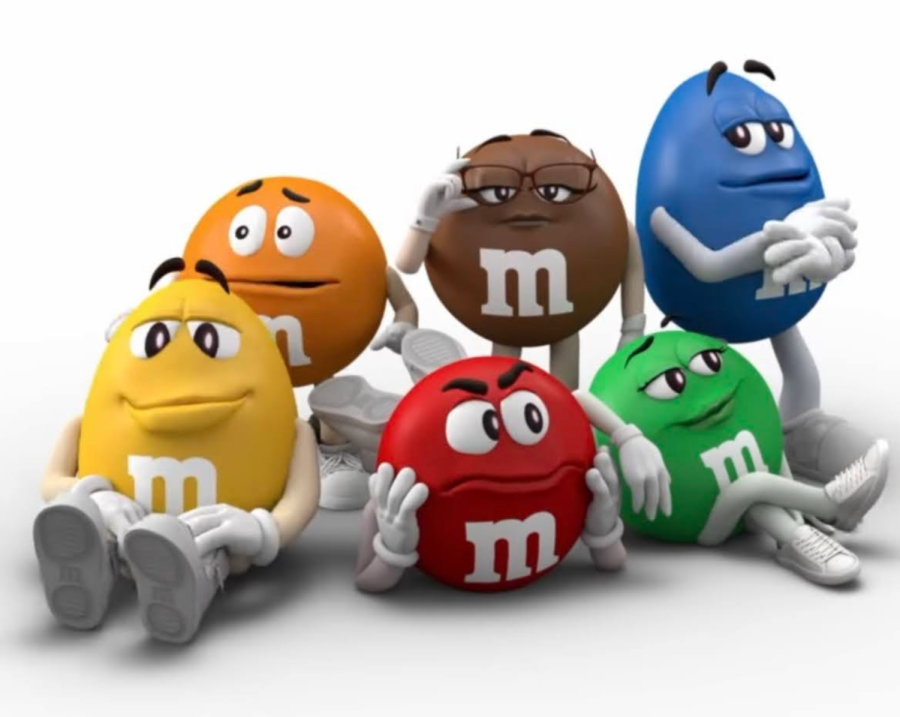Ms. Green: A female candy icon done wrong
Photo courtesy of @mmschocolate on Instagram
The new design of M&Ms, featuring Ms. Green without go-go boots.
Many iconic women have walked the Earth: Frida Kahlo, Ruth Bader Ginsburg, Tina Turner, Princess Diana, Malala Yousafzai and our beloved Betty White. Yet one icon just got done wrong: the prominent Ms. Green.
Two groundbreaking events occurred on the candy scene in the late 90s. The first was the introduction of the green M&M in 1960. The second was its marketing-character debut as an alluring female with white, calf-high heels during the 1997 Super Bowl. For 17 years, Ms. Green was the only female M&M. Then, Ms. Brown was introduced during the 2012 Super Bowl as a sophisticated boss lady, worthy of our respect. Since then, the spokes-candies have taken the nation by storm, but are now being robbed of their most iconic features, lost to the horrors of rebranding.
The reason for the M&M rebranding, said the parent company, Mars, was to give a “fresh and modern take on the looks of our beloved characters and more nuanced personalities to underscore the importance of self-expression and power of community through storytelling.”
As the rest of society noticed, they only started changing the female M&Ms. Yes, Ms. Green’s go-go boots and Ms. Brown’s stilettos make them provocative. Did we forget Tucker Carlson’s comment about Ms. Brown?
Stilettos have been worn by some of Hollywood’s adored divas: Audrey Hepburn, Greta Garbo, Rita Hayworth and Marilyn Monroe. Heels symbolize high social stature and refined fashionable taste. Removing Ms. Brown’s stilettos takes away the confidence that she has had for a decade. As Monroe once said, “Give a girl the right pair of shoes and she’ll conquer the world.”
Heels were originally made for men, the most well-known user being King Louis XIV. Ironically, they are now a staple fashion item almost every woman has in her closet. Go-go boots were not only iconic to Ms. Green’s persona, but to history, as a whole. French designer André Courrèges created them for his modern and futuristic collection “Moon Girl” in the ‘60s. The boots are empowering, and symbolize female defiance, power and independence. Jane Fonda, Pam Grier and Buffy Sainte-Marie were some of the many “take-no-prisoners” females to don the footwear, but Nancy Sinatra was the poster girl of this look. The popularity of the calf-high boots skyrocketed after the release of “These Boots Were Made for Walking,” a female empowerment anthem established in 1966.
The M&Ms’ confidence came from their personality and their shoes. Trading go-go boots and stilettos with sneakers and kitten heels not only eliminates the female M&Ms defining qualities, but their power as well. Those cartoon candies served as an entrance to female empowerment for young girls of all generations. They’re not just sexy: they are confident, smart and independent. Most importantly, those shoes are worthy of role models.








